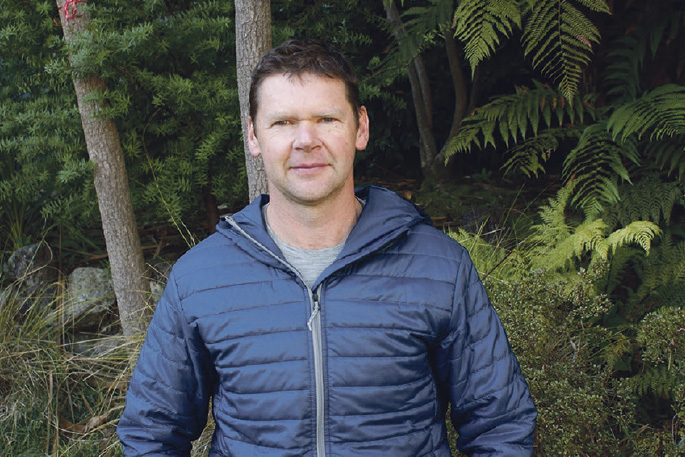While many will be hoping for a fine summer, for sheep farmers the weather can prove a conflict between getting enough rain to keep the grass growing, but also trying to dodge the flystrike bullet.
Boehringer Ingelheim Animal Health NZ’s technical vet adviser Richard Sides says now is the ideal time to consider the value of flystrike insurance, with prevention far better than the cure after a flystrike outbreak has taken place.
“Last summer proved to be challenging for a number of farmers around Hawke’s Bay and the East Coast region,” says Richard.
“After a few summers with not too many problems due to prevention strategies appearing to work; well they suddenly found their flocks hit quite hard by flystrike outbreak in what were wetter, more humid conditions than they had experienced the summers before.
“The higher level of fly challenge pushed hard on chemicals and applications that previously had been fine.”
Richard likens taking an active, thoughtful approach to flystrike control, timing and application as valuable insurance that should be taken out every summer.
“While we may advocate for adjusting drench routines according to egg counts and parasite challenge, when it comes to flystrike the issues are quite different to internal parasites.
“Delaying treatment, or applying a low-challenge dip method, means you can face a real animal welfare issues with flystrike that you don’t want to see in your stock.”
His advocacy for timely and effective control is reinforced by a survey conducted by AgResearch during 2010-2011, examining how susceptible the recently-arrived Australian Green Blowfly was to common treatment chemicals triflumuron and dicyclanil.
The study was prompted by reports of flystrike treatments not proving effective in humid, damp regions, including Waikato-King Country.
The study not only revealed widespread resistance to the flystrike active triflumuron in common blowflies, but also resistant Australian green blowfly maggots. It also confirmed the spread from further north of the Australian blowfly.
With such traditional actives under threat of resistance, Richard points to an “oldie but a goodie” active that is a valued option for farmers in the seasonal battle against flies and maggots.
“Cyromazine-based treatments as Insect Growth Regulators have been around for 30 years and there are no documented cases of resistance to it in flies here in NZ. It has outlived that usual 10-15 year cycle where resistance develops.”
The long acting, 14 weeks, nature of the active has proven itself over the years controlling flies. As with all dip chemicals, however, weather conditions can challenge how long it works for.
Recently Boehringer Ingelheim Animal Health enhanced its cyromazine-based product Cyrazin, by adding ivermectin, sold as Cyrazin KO.
“While ivermectin has been around for internal parasites for many years, it is also a highly effective active against fly maggots, including the largest ‘third stage’ ones which are the most difficult to kill.
“So Cyrazin KO offers a complete one-stop solution at the start of the season, eliminating any early maggots and preventing fly strike going forward into those warm, wet months.
“It is a case of ‘do it once, do it right’,” says Richard.
The use of Cyromazine active has added benefit of not being a toxic organo-phosphate based treatment, meaning it is user-friendly not only to the sheep, but the farmer or dipping contractor using it.
“The advantage is also being able to make a quick decision on the spot to use it, knowing you are dealing with all stages of fly development, rather than having to go and find a second chemical to mix in with it.”
Richard maintains there would be very few parts of the country now that don’t face some seasonal flystrike risk, particularly now the Australian blow fly has penetrated the country the way it has.
Warmer – and sometimes wetter – means he’s advising more farmers to review their traditional treatment patterns and talk to their vet about setting up improved animal health treatment programmes.
“We have had a number of farmers who have questioned their traditional shearing routine.
“They are now considering shearing earlier, and bringing their animals through for treatment a few weeks later, to ensure they cover the whole risk period. Just because a programme has worked for so many years in the past, does not mean it will continue to into the future.”
Part of any complete animal health plan should also incorporate internal parasite control that can have a strong interplay with fly-maggot infestations,” says Richard.
“You need to consider an effective internal parasite control that will result in less dags, which are in many cases a precursor to maggot infestations.
“Talking to your vet and making a complete plan sooner rather than later will certainly save some grief as summer unfolds.”



0 Comments
Leave a Comment